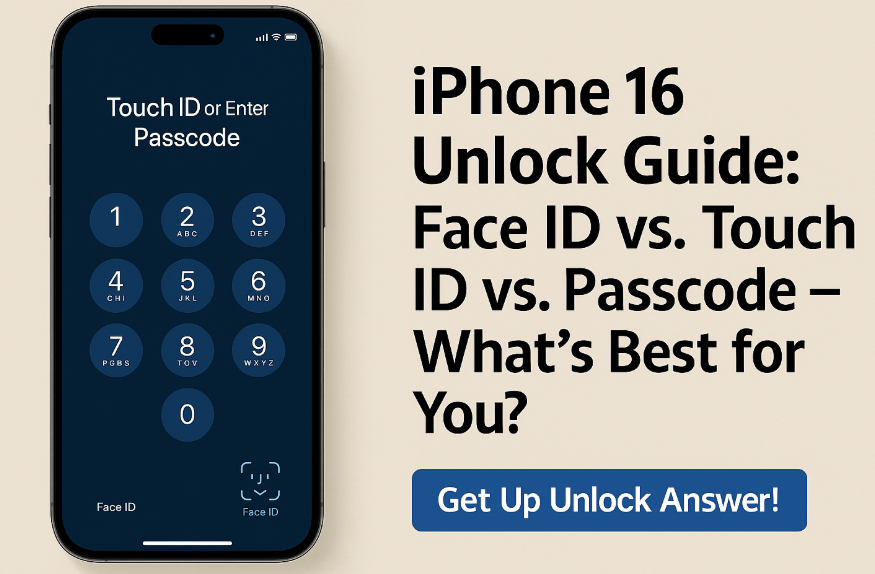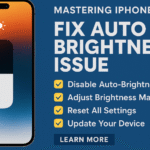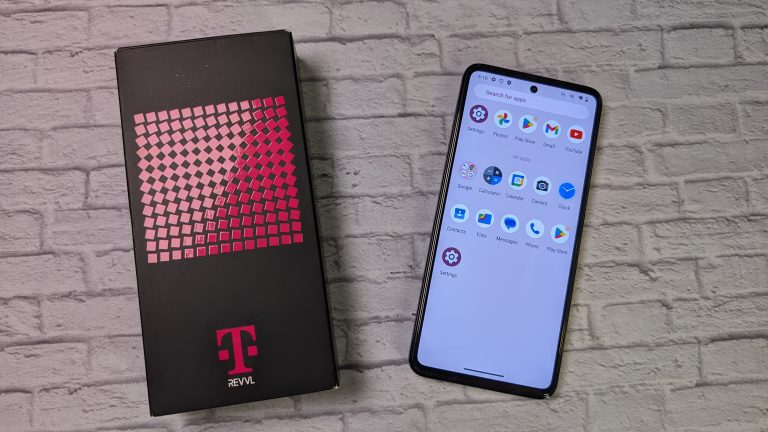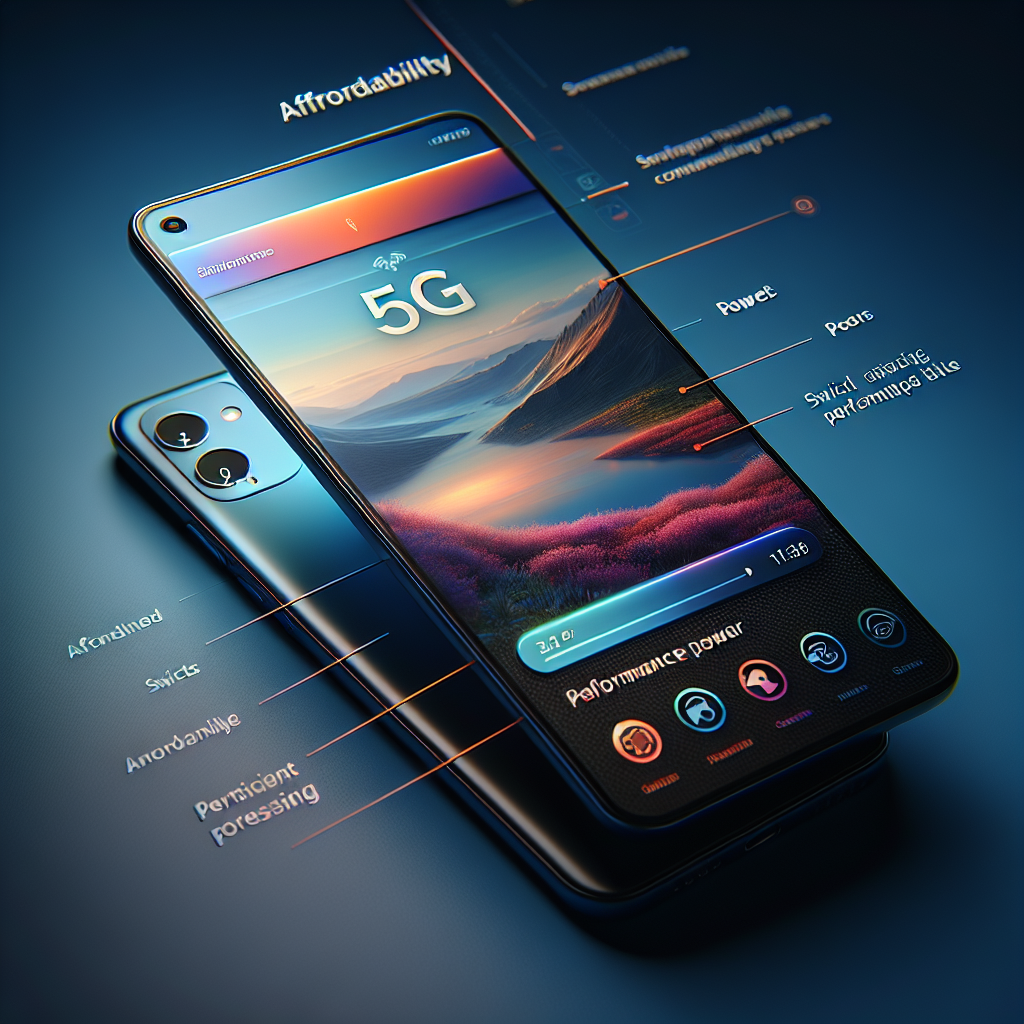In today’s digital world, secure access to your smartphone is non-negotiable. With the iPhone 16, Apple offers a diverse set of unlocking methods each designed to balance convenience, speed, and privacy. Whether you’re new to the iPhone or considering an upgrade, understanding how to best unlock your device is key to making the most of Apple’s security ecosystem.
In this guide, we’ll explore all the available iPhone 16 unlock options: traditional passcodes, Touch ID, Face ID, and even hybrid methods combining multiple techniques.
1. Passcode: The Original Security Method
Passcodes remain the foundational unlock method on iPhones. They provide a manual way to access your device and serve as a fallback for biometric methods.
Why Use a Passcode?
-
Customizable for 4-digit, 6-digit, or alphanumeric combinations.
-
Stored locally and encrypted for high-level security.
-
Required when restarting your phone or after several failed biometric attempts.
-
Offers full control without relying on hardware sensors or camera input.
However, passcodes can be time-consuming and are less secure if you use a predictable pattern. They are best used in combination with another method like Touch ID or Face ID.
2. Touch ID: Secure Fingerprint Access
Touch ID, Apple’s fingerprint recognition system, is favored for its quick authentication and intuitive experience.
Touch ID Benefits:
-
Unlock your iPhone 16 simply by placing a registered finger on the sensor.
-
Support for multiple fingerprints ideal for family members or dual-handed use.
-
Enables fast verification for App Store, Apple Pay, and password managers.
-
Doesn’t require visual confirmation perfect for use in the dark or while wearing a mask.
Touch ID is especially valuable for those who prefer tactile feedback and face limitations using Face ID.
3. Face ID: Apple’s Advanced Biometric Security
Face ID, introduced with earlier iPhones and now perfected on iPhone 16, is one of the most advanced forms of smartphone facial recognition.
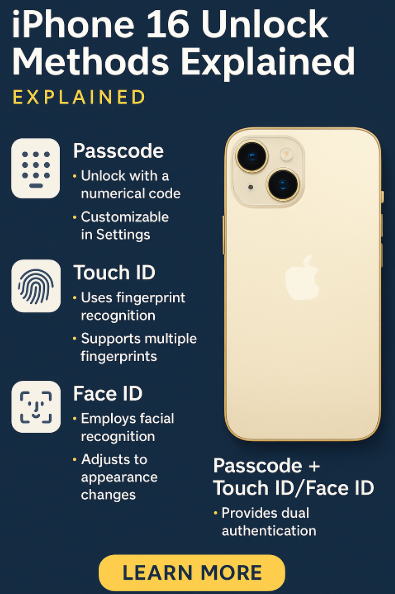
Face ID Highlights:
-
Uses a True Depth camera system with 3D facial mapping for unmatched accuracy.
-
Adapts to physical changes (e.g., beard growth, glasses).
-
Processes in milliseconds, offering nearly instant unlocking.
-
Works for secure login, in-app purchases, and auto-fill fields.
-
Keeps facial data securely stored on the device (never shared externally).
While incredibly convenient, Face ID may falter in poorly lit conditions or extreme angles but Apple continues to refine its performance in iOS updates.
4. Using Dual Methods: Passcode + Face ID or Touch ID
For enhanced security, iPhone 16 allows dual authentication by requiring a passcode fallback alongside Face ID or Touch ID.
Why Consider Dual Unlocking?
-
Combines physical and biometric security layers.
-
Protects against spoofing, biometric misfires, or sensor issues.
-
Allows you to set stricter privacy settings, such as timed reauthentication.
This method is ideal for privacy-conscious users or those working in sensitive environments like healthcare or finance.
Everyday Use Cases: Which Unlock Option Is Best for You?
| Use Case | Recommended Method |
|---|---|
| Dark or noisy environment | Touch ID |
| Hands-free, fast access | Face ID |
| Shared device access | Touch ID (multi-user) |
| High-security needs | Face ID + Passcode |
| Traveling or wearing gloves | Passcode or Face ID |
Tips to Optimize iPhone 16 Unlock Settings
Combine these unlocking methods with smart iPhone settings for maximum utility:
Conclusion: Choose Your Unlock Strategy Wisely
With Face ID, Touch ID, passcodes, and the ability to use them in tandem, the iPhone 16 offers unmatched flexibility when it comes to secure access. The best choice depends on your environment, usage style, and privacy expectations.
No matter which method you prefer, Apple has designed each one to safeguard your data while keeping the unlocking experience fluid and intuitive.



